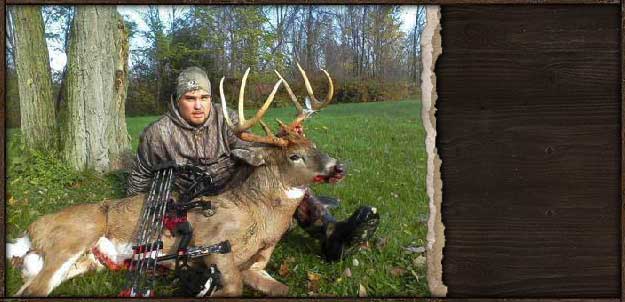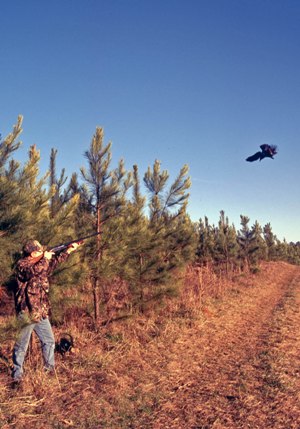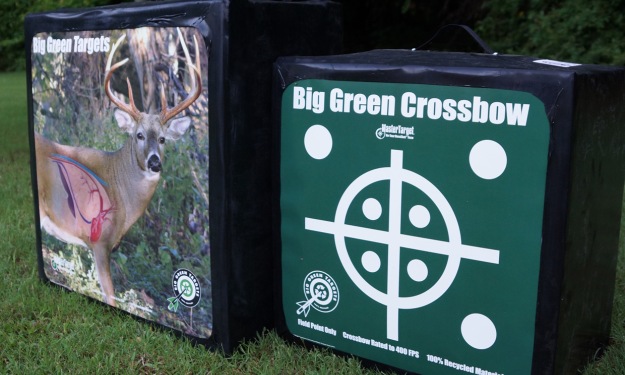
Editor’s Note: Steven Reinhold of Polk, Ohio, is the Regional Pro Staff Manager for Mossy Oak’s Eastern US Predator Division. The good news about predator hunting is that in certain states, you can hunt them before deer season arrives, during deer season and you after deer season. Even when predators are out of season, a farmer or a rancher often can get a crop-depredation permit for you to hunt predators on their lands. Many people believe predator hunting is easier in the West with its open terrain, but Reinhold has been extremely-successful taking predators in the East.
During the summer, many of my friends call and hunt crows. When we think of predators, we’re more likely to think of raccoons, foxes, coyotes and bobcats, but crows not only will destroy a corn crop, they’ll come right behind a farmer planting seeds and dig-up the seeds. I’ve heard that in the South, they can destroy entire pecan orchards. I use crow-in-distress or crow-and-owl fight sounds. Here’s a tip that really will help you when crow hunting that I had to learn by trial and error: don’t shoot the first crows that arrive. Crows are much smarter than people realize. The first crows to come in are the scout crows after you call. If you shoot them, the flock of crows behind them won’t come in, but if you let those first crows come in and land around you, they’ll call the rest of the crows in to you. This is where wearing Mossy Oak really pays off. I wear total Mossy Oak camouflage including a net and a hat. Crows have keen eyes, so if they see you, the party will be over. Because the crows in our area seem to prefer sweet corn to field corn, when the sweet corn starts coming in, so do the crows.
 In the seminars I teach about predator hunting, I’m often asked about the biggest mistakes hunters make when predator hunting. Most of the time, predator hunters seem to give up too quickly. To become a seasoned predator hunter requires some time. But if you’re a turkey hunter and hunt predators like you do turkeys, you’ll take predators more easily. Start by calling softly, because there may be predators within 100 yards of you. If the predators don’t come in within 10 minutes, increase the volume of your calling. When I pick a spot, I’ll stay there about 15 or 20 minutes. If nothing comes in, I’ll move to another location. I mainly hunt in the morning and may take four or five stands each day I hunt. On the best day of coyote hunting I’ve ever had, I took six coyotes. However, on most days, I’m lucky to get one or two. When I hunt predators, I really like using electronic callers like those from FOXPRO. I can set-up behind the caller with a big tree at my back and increase or decrease the volume of the call, change the call sound or activate the decoy, all from a remote device.
In the seminars I teach about predator hunting, I’m often asked about the biggest mistakes hunters make when predator hunting. Most of the time, predator hunters seem to give up too quickly. To become a seasoned predator hunter requires some time. But if you’re a turkey hunter and hunt predators like you do turkeys, you’ll take predators more easily. Start by calling softly, because there may be predators within 100 yards of you. If the predators don’t come in within 10 minutes, increase the volume of your calling. When I pick a spot, I’ll stay there about 15 or 20 minutes. If nothing comes in, I’ll move to another location. I mainly hunt in the morning and may take four or five stands each day I hunt. On the best day of coyote hunting I’ve ever had, I took six coyotes. However, on most days, I’m lucky to get one or two. When I hunt predators, I really like using electronic callers like those from FOXPRO. I can set-up behind the caller with a big tree at my back and increase or decrease the volume of the call, change the call sound or activate the decoy, all from a remote device.
I love to hunt predators, but I also love to hunt deer. The biggest buck I’ve ever taken scored 183. I had put my son, Mason, in his tree stand in 2008. My stand was only 75-yards from his. Just when I got in my stand, I saw three small bucks and a doe. After they left the area, I saw movement and antlers in the thicket. I hadn’t been in the stand 5 minutes when this big buck stood up about 45-yards from me. He came in to 21 yards and turned broadside. I shot him with my Alpine Archery Silverado bow. Hunting is my passion, and deer season only lasts a little while. I can predator hunt long after and before deer season.
Raccoons are a Bigger Problem in the East than Coyotes in the West






























